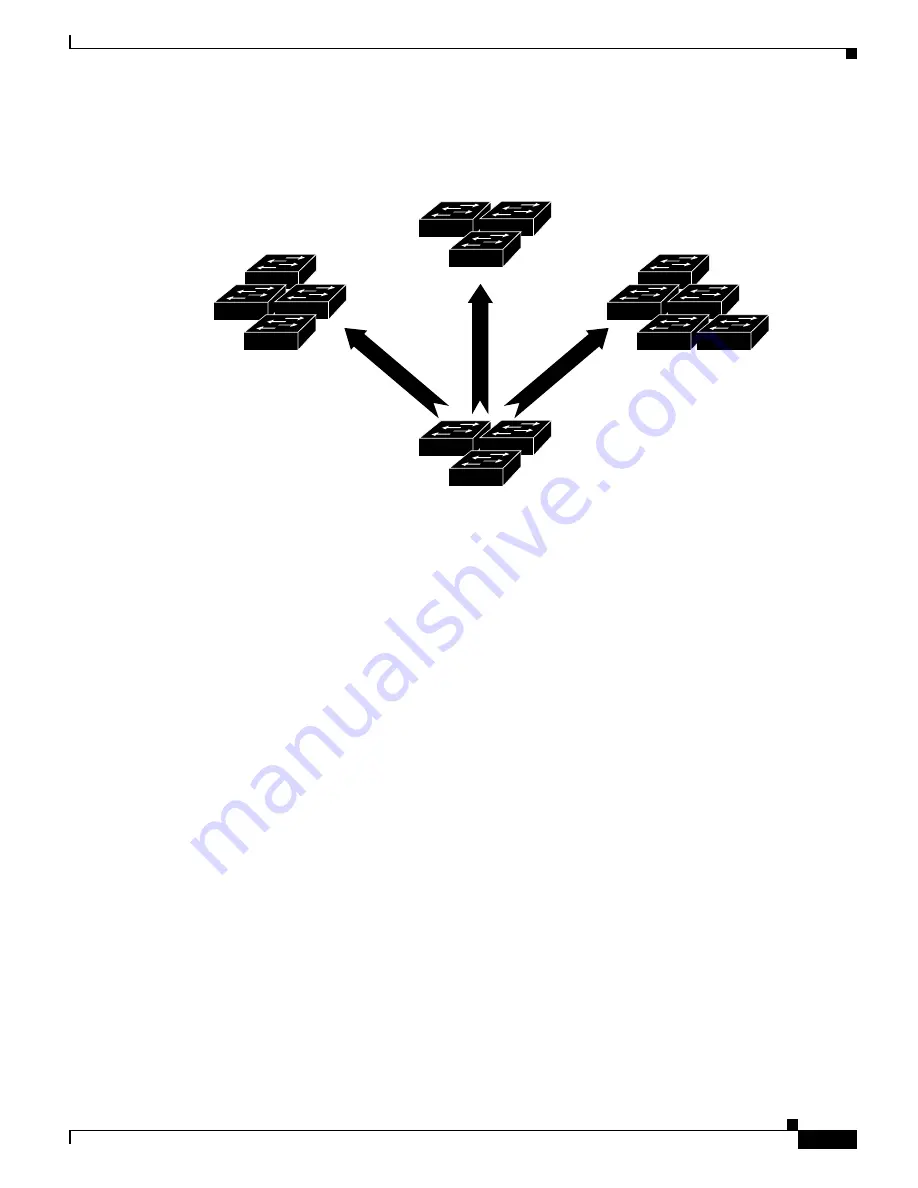
10-17
Catalyst 6500 Series Switch Software Configuration Guide—Release 8.7
OL-8978-04
Chapter 10 Configuring VTP
Understanding How VTP Version 3 Works
Figure 10-5
VTP Version 3: Reconfiguring a Partitioned VTP Domain
Initiating a takeover is a critical operation due to the following reasons:
•
The takeover erases conflicting configurations that are potentially stored on other primary servers
in the VTP domain. VTP lists all the switches with conflicting configurations (when you enter the
show vtp conflicts
command) and prompts you for confirmation before taking over (a server has
conflicting information if it belongs to the same VTP domain but has a different primary server).
•
The takeover leaves this switch (server X in
Figure 10-5
) as the only primary server controlling the
VTP domain.
If you have a hidden password configured, you need to reenter the password to do a takeover. Switches
refuse the takeover request if they are not correctly authenticated. If no authentication is enabled, any
server is able to take over.
After a takeover, there should be only one primary server controlling the entire VTP domain for a
particular instance. If this is not the case, it might be due to the following:
•
Some switches may be temporarily disconnected and unreachable when the takeover message is
sent.
•
The takeover message might be lost on some links (however, the takeover messages are repeated to
reduce this risk).
In both cases, you can correct the problem by issuing additional takeover messages.
For more information on configuring a takeover, see the
“Configuring a VTP Version 3 Takeover”
section on page 10-27
.
VTP Version 3 Modes
The default mode for VTP is version 1, server mode. The off mode can be exited only after you configure
a VTP domain name on the switch. The “domain discovery” that is used in VTP version 1 and VTP
version 2 is not available in VTP version 3.
Partition W
Partition X
Partition Y
Partition Z
VTP Instance
94283
















































